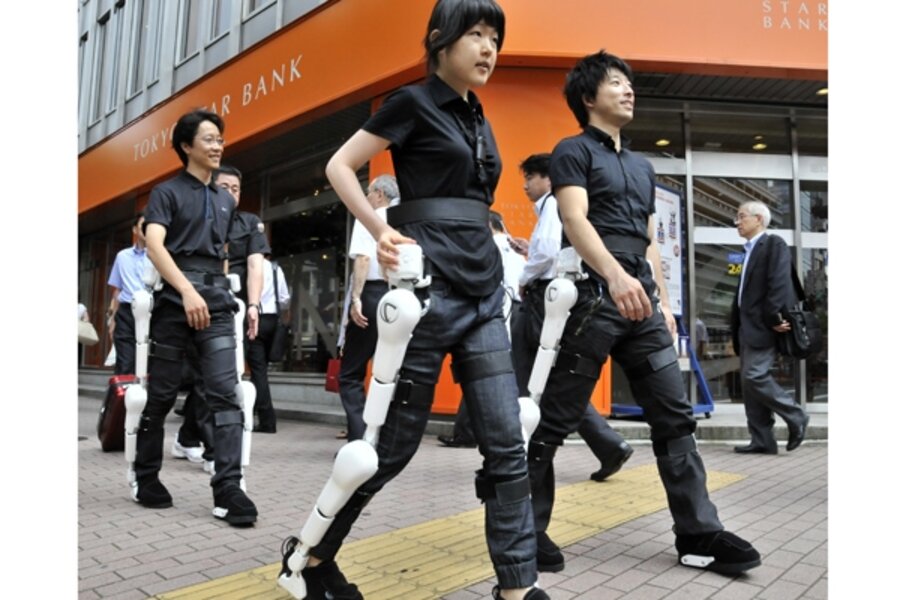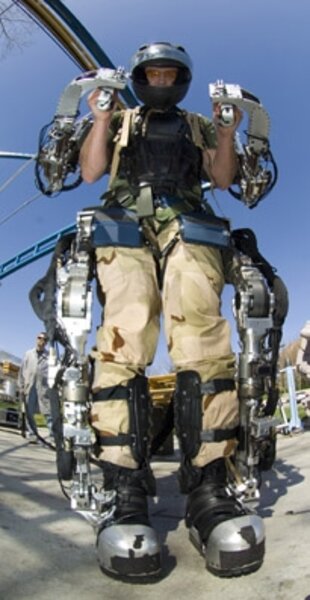Robotic exoskeletons: Suited for superhuman power
Loading...
The high-tech suits of “Iron Man” and “RoboCop” don’t seem so far off to Yoshiyuki Sankai. Since the third grade, this Japanese professor and inventor has been enchanted by Isaac Asimov’s story “I, Robot” and the idea that robots – or, in Mr. Sankai’s case, robotic suits – could help humans with everyday life.
In 2005, he unveiled several working prototypes of a mechanical, mind-controlled “exoskeleton” that could allow the disabled to walk. The suit – recently refined and now available for rent in Japan – resembles white soccer shinguards attached to each segment of the arms and legs and a fanny pack-like battery hooked around the waist.
Sankai hopes these mind-controlled Hybrid Assistive Limbs (HAL) will be one of the inventive ways that Japan deals with its rising average age.
His suits can pick up the tiny flickers of energy that brains send to nerves when you “tell” your body to move. Sensors relay this information to the suit’s central computer and, within 125/1000ths of a second, the robot outfit moves to match your thoughts. Over time, HAL learns to better interpret your nerve signals, allowing for greater control when standing up, climbing stairs, or lifting heavy objects.
While the suit weighs close to 50 pounds, HAL supports its own heft, so you barely notice the extra bulk. You will notice a boost in strength, Sankai says, since the suit multiplies a human’s force by two to 10 times.
Sankai’s company, Cyberdyne, offers the suits to disabled customers in Japan, and recently opened an office in Europe. Rentals start at 220,000 yen ($2,450) a month.
In the US, researchers are working on a similar suit, but with a very different purpose. Defense contractor Raytheon has designed an exoskeleton for Army soldiers. Still in its early stages, the XOS suit provides troops with a significant boost in strength and endurance.
In its exhibition, the XOS team had software engineer Rex Jameson run, kick a soccer ball, speed box a punching bag, and lift 200 pounds with ease. They joke that such demonstrations end not because the feats of strength tire out Mr. Jameson, but because he gets bored.
The hurdle for Raytheon is powering the suit. Unlike HAL, which runs off a battery that lasts several hours, the XOS requires a tethered power cord to work. Without a substantial flow of juice – more than a battery can provide long-term – Raytheon’s suit is just 50 pounds of metal, cords, and servos.
Another difference is that XOS’s computer doesn’t need brainwaves. Instead, Jameson swings his arms as normal and the suit emulates the movement and predicts what will come next.






